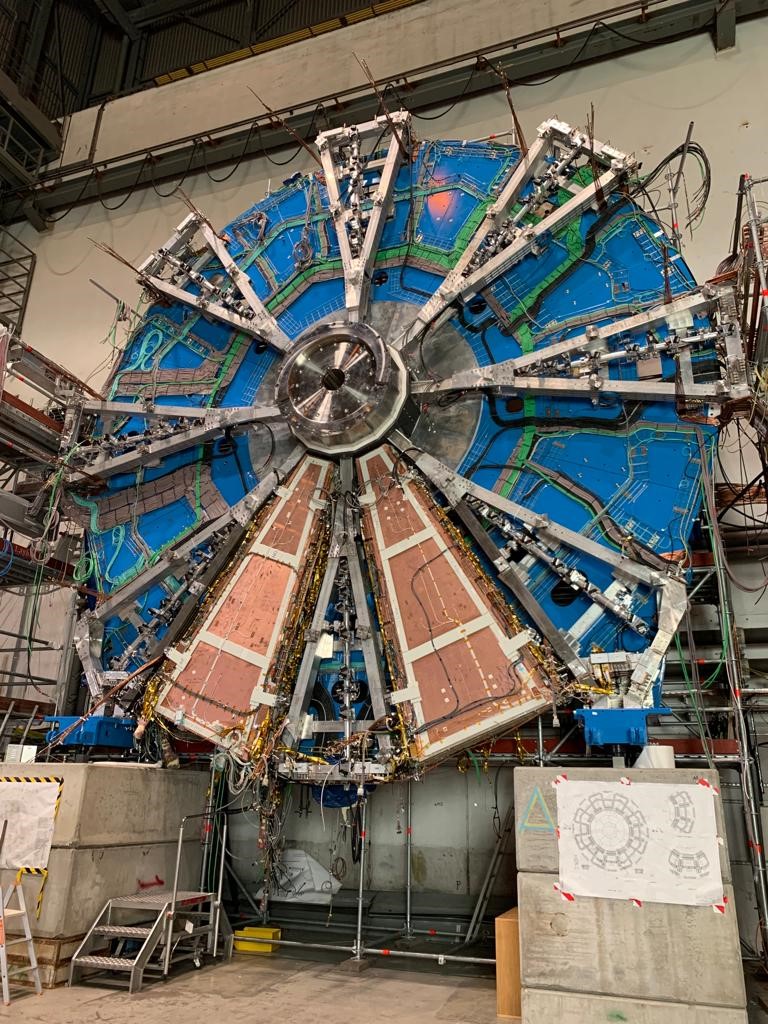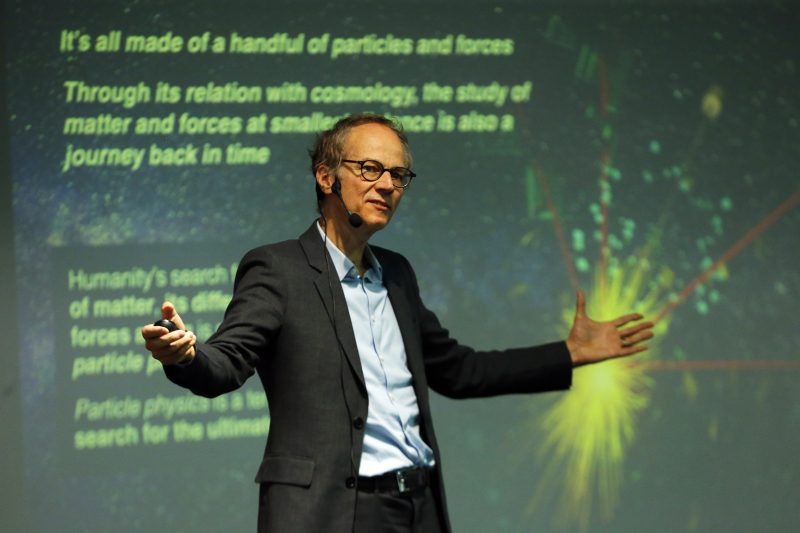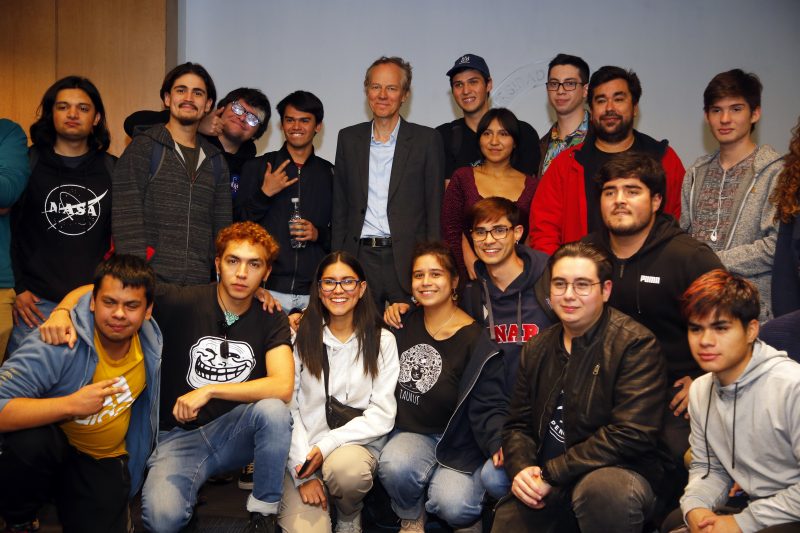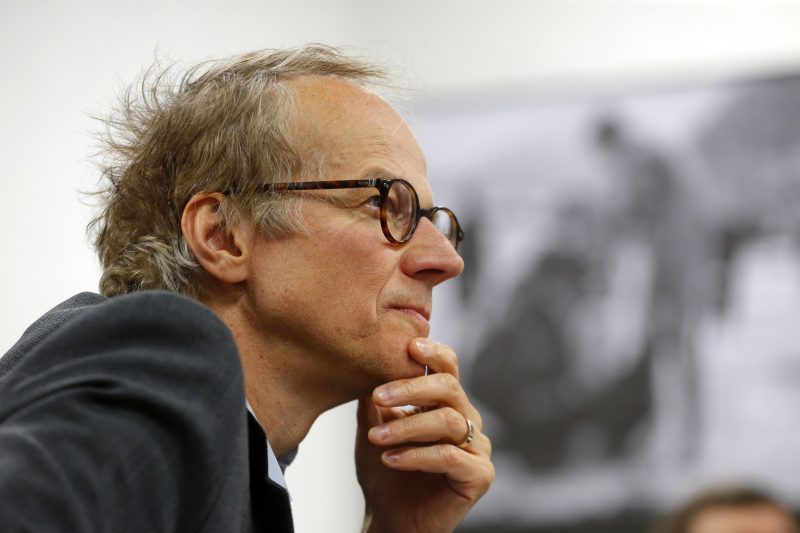Pamela Alarcón, UNAB Journalist.- Students and professors of Physics from the Andrés Bello University had the privilege of listening to who is, at this moment, the highest representative of one of the most important collaborations in particle physics that is being developed today in the world.
He is the prominent German physicist Andreas Hoecker, director and spokesperson for the ATLAS collaborationan experiment that has been carried out since 1992 in the CERN, the European Organization for Nuclear Research, based in Switzerland. Dr. Hoecker recently visited UNAB’s Casona Campus, where he presented the fascinating talk “Smashing discoveries − Physics at the High-energy Frontier with the ATLAS experiment at the Large Hadron Collider”.
“Few times have we heard such inspiring talks and such a difficult subject to understand, such as particle physics. It really was a very special moment,” said the UNAB Vice Chancellor for Research and Doctorate, Carolina Torrealba. In his opinion the visit of the prominent German scientist:
«It is a demonstration of the depth and strength of the research networks that the university has. From here, Campus Casona, we are contributing to an experiment of enormous global magnitude as is what is happening at CERN, the ATLAS project. From the university, with the students, with the different researchers we are contributing to the advancement of research in the world”.
A world-class collaboration
 To understand the importance of this visit, it is necessary to dimension the magnitude of the experiment: ATLAS It is a cylindrical machine that measures 46 meters long, 25 meters in diameter, weighs 7,000 tons, and rests in a cavern 100 meters underground. It is the largest fundamental particle detector ever built at the Large Hadron Collider (LHC), the particle accelerator at CERN, in Switzerland.
To understand the importance of this visit, it is necessary to dimension the magnitude of the experiment: ATLAS It is a cylindrical machine that measures 46 meters long, 25 meters in diameter, weighs 7,000 tons, and rests in a cavern 100 meters underground. It is the largest fundamental particle detector ever built at the Large Hadron Collider (LHC), the particle accelerator at CERN, in Switzerland.
It is also the largest collaborative scientific effort in human history. ATLAS has nearly 6,000 members including physicists, engineers, technicians, students, and support staff, and 3,000 scientific authors around the world. They all work to achieve the same goal: to discover the secrets of the Universe by studying subatomic particles that collide at very high energy in the heart of ATLAS.
From Chile, Andrés Bello University is also part of this global collaboration, through the scientific work carried out by the Millennium Institute of Subatomic Physics at the Frontier of High EnergiesSAPHIR, led by Sergey Kuleshov, director of the Center for Theoretical and Experimental Physics at UNABthe SAPHIR Millennium Institute brings together the collaborative research work of UNAB, the Pontifical Catholic University of Chile, the Federico Santa María Technical University, the University of La Serena and the University of Tarapacá.
Jilberto Zamora, academic of the Department of Physical Sciences of UNAB and associate researcher of the SAPHIR Millennium Institute, underlined the relevance of the visit of the German scientist. “That a physicist like Andreas takes the time to visit us is in itself remarkable, and a sign that we have been doing well. The UNAB particle physics group is relatively new, we are five years old, so this visit highlights and confirms our progress”.
Exploring particle physics
The visit began with a meeting in which Dr. Hoecker shared with UNAB Vice Chancellor for Research and Doctoral Studies, Carolina Torrealba; the dean of the Faculty of Exact Sciences, Pierre Romagnoli; and academic researchers from the Center for Theoretical and Experimental Physics.
 Then he continued with the exciting talk “Smashing discoveries − Physics at the High-energy Frontier with the ATLAS experiment at the Large Hadron Collider”, at the Aznar Auditorium. There, students and faculty from the university witnessed Hoecker’s overflowing enthusiasm and knowledge. The German physicist told the story of particle physics from its beginnings in ancient Greece, with the philosopher Democritus, through the development of the Standard Model, until reaching the main discoveries that have been made at CERN through the particle detector. ATLAS at the Large Hadron Collider.
Then he continued with the exciting talk “Smashing discoveries − Physics at the High-energy Frontier with the ATLAS experiment at the Large Hadron Collider”, at the Aznar Auditorium. There, students and faculty from the university witnessed Hoecker’s overflowing enthusiasm and knowledge. The German physicist told the story of particle physics from its beginnings in ancient Greece, with the philosopher Democritus, through the development of the Standard Model, until reaching the main discoveries that have been made at CERN through the particle detector. ATLAS at the Large Hadron Collider.
Jilberto Zamora, academic researcher of the Department of Physical Sciences of UNAB and member of SAPHIR He highlighted the importance for students of attending this talk. “Having the opportunity to hear first-hand – and from a world expert – the current state and where particle physics is going in the world, I think is simply inspiring.”
As Hoecker explained, the ATLAS experiment is scheduled to continue until the year 2041, by which time they will obtain 20 times more data than they currently have. “What I’m most excited about is that I think this new data will allow us to access a whole new sector of Higgs physics.”
 “We are creating fundamental knowledge and the technology that we are currently building to prepare for the new phase of the Large Hadron Collider (LHC) is of course very important in applications. For example, we are developing new timers that measure the arrival of a particle very precisely, and this can be used in dosimetry or other applications—it’s completely new technology.”
“We are creating fundamental knowledge and the technology that we are currently building to prepare for the new phase of the Large Hadron Collider (LHC) is of course very important in applications. For example, we are developing new timers that measure the arrival of a particle very precisely, and this can be used in dosimetry or other applications—it’s completely new technology.”
Andreas Hoecker’s visit ended with a tour of the facilities of the SAPHIR Millennium Institute and the UNAB Center for Theoretical and Experimental Physics, where he was able to share with the researchers who work there.




![[Img #74662]](https://thelatestnews.world/wp-content/uploads/2024/12/Organisms-with-the-shortest-life-150x150.jpg)








![[Img #74662]](https://thelatestnews.world/wp-content/uploads/2024/12/Organisms-with-the-shortest-life-300x200.jpg)

